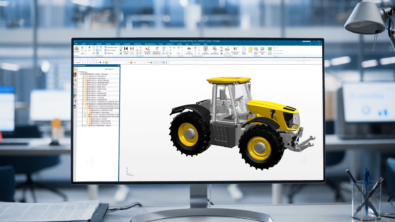Next Generation PLM: Modeling Complex Products in a Complex World

Next Generation PLM
Product complexity is a reality facing most companies today. We’ve explored a variety of bill of materials topics to help address managing product complexity. We’ve been thinking about this at a more fundamental level – how do we model complex products? I’ve asked my colleague, Chris Scheffer, to explore the challenges today, and look forward to the next generation of PLM.
The Reality of Complex Products
Products are getting more complex, with more variation, and with a greater emphasis on software and advanced electronics. More products are getting ‘smart’ and ‘connected’.We actually now have connected toothbrushes! So modeling something as simple as a toothbrush (apologies to toothbrush makers) is now getting pretty complicated. Traditional PDM systems, which treat products as a single assembly of 3D parts, are increasingly becoming inadequate to model today’s products. An assembly model of the components of the toothbrush will show how they fit together, but not how the components interact. Our connected toothbrush has fairly complex systems, which perform complex functions, which need to work together to do something useful for the consumer.
 Photo credit: P&GEven in the physical space, where traditional PDM is most useful, packaging these components in a tight space is a challenge. If a designer modifies the shape of a component, how does the PDM system determine if that new shape will fit? The designer would most likely need to load the entire product to ensure that the change will not interfere with other components. For many products that are larger and more complex than a toothbrush, this can be infeasible due to the performance of loading large structures into CAD. Complexity is further increased if multiple product variants or configurations are involved.
Photo credit: P&GEven in the physical space, where traditional PDM is most useful, packaging these components in a tight space is a challenge. If a designer modifies the shape of a component, how does the PDM system determine if that new shape will fit? The designer would most likely need to load the entire product to ensure that the change will not interfere with other components. For many products that are larger and more complex than a toothbrush, this can be infeasible due to the performance of loading large structures into CAD. Complexity is further increased if multiple product variants or configurations are involved.

Of course, products involve more than just physical modeling. Multiple engineering disciplines are responsible for different aspects of a product. Typically they each have their own representations of the product, optimized for their own needs. Different models may exist for systems engineers, CAD, BOM, electrical, software, CAE, manufacturing, etc. This results in redundant and often inconsistent data across representations, where much effort is spent just keeping models up to date.
Change management is becoming increasingly complex. Rates of change are increasing, the number of variants to analyze and the process is increasing, and the complexity and number of digital models are increasing. If a component in a product changes, how can the engineer know which other components are affected? Does the software need to be updated? Does wiring need to be re-routed? How does the engineer know which variations or configurations of the product are impacted?
It is becoming increasingly difficult to answer these questions using traditional PDM. Modern products are more than just a simple hierarchy of parts – they are a complex network of interconnected systems and components.
The Next Generation of PLM
Next-generation PLM modeling techniques are needed for these next-generation products. Instead of modeling a product as a structure, products now can be modeled as interconnected components…

- Where interdependencies between the components are more easily understood
- Where impacts of a change to a component can be more easily identified
- Where information is not siloed into multiple redundant structures
- Where the product has a digital ‘single source of truth’
- Where each engineering domain can see this digital product from their perspective, without duplication of data
- Where each engineer can easily find the right data (no more and no less) to perform a particular task
- Where each component understands its requirements, its systems, its functions, its spatial orientation, its shape, its material, its product variants, its assembly process, its supplier, its lifecycle, its reported issues, its changes, its cost, and its interactions with other components
- Where information can be loaded efficiently regardless of the scale or complexity of the product
- Where all of this information is easily accessible, without burying the engineer with data
Want to hear more about our next-generation PLM modeling? Stay tuned!

About the Author: Chris Scheffer is a Teamcenter Product Manager and a member of the team responsible for Integrated Product Definition. He has helped companies across industries understand, adopt, and leverage PLM.


